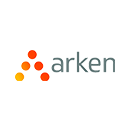Trusts are a complex area of the law and professional advisors, like yourselves, often spend hours researching, checking, and updating clauses and tax treatments. It’s another level of administration, on top of re-keying in data into multiple documents, multiple times for multiple people!
With the advent of technology, traditional methods of Trust creation have evolved. In this blog, we explore the reasons why some of the leading brands in your industry are now using software to create even the most complex documents.
Reason 1: Precision
As human beings, we all have good days and bad days, no one is immune from making mistakes. Drafting software supports the professional by highlighting areas that need addressing, using consistent language, and noting areas where bespoke work has been applied.
The precedents, clauses and Trust tax treatments are monitored by a Legal Advisory Board too. Removing the hours of research required to keep abreast of changes and providing an up to date precent bank that uses best practice wording.
Reason 2: Time Efficiency
The traditional process of manually drafting Trusts can be time-consuming, involving numerous revisions and edits. Drafting software significantly speeds up this process, allowing estate planning professionals to create comprehensive Trusts in a fraction of the time. This increased efficiency not only benefits your business, but it also expedites the overall estate planning timeline for the client, who expect faster turnaround times.
Reason 3: Document management
Storing all your documents in one place helps with version control, audit histories and collaboration. It also means you can print all documents from one place, saving you time in compiling the document pack for your client. Misplacing important documents becomes far less likely and helps keep client data in a secure system.
Reason 4: Risk Mitigation
Arken’s Trust drafting software incorporates built-in checks and balances to identify potential errors or inconsistencies in your documents. By detecting and rectifying issues during the drafting phase, these tools contribute to risk mitigation and help prevent legal complications that could arise from oversights or mistakes.
Reason 5: Complexity is Supported
Arken’s Trust software is very comprehensive and covers a wide range of Trust documents. In Arken Professional, you can draft Testamentary Trusts as part of your subscription, you can draft:
- Life interest in property Trust
- IPDI (immediate post death interest) Trust
- Discretionary Trust
- Vulnerable person’s Trust
- Nil rate band discretionary Trust
- Flexible life interest Trust
- Age contingent Trust
- Bereaved minors Trust
- 18-25 Trust
- Charitable Trust
- Right of occupation Trust
The Lifetime Trusts are available in an add on piece of software called Arken Lifetime. It contains all the Trusts you can draft if you have the right to carry out reserved activity, these are:
- Interest in Possession Trust (General)
- Flexible Life Interest Trust
- Discretionary Trust
- Pension Death Benefit Trust
- Charitable Trust
- Pilot Trust
- Bare Trust
- Expression of Wishes (Lifetime Trust)
- Vulnerable Person’s Trust
- Declaration of Trust
- Life Insurance Policy Trust
In the changing landscape of estate planning, leveraging drafting software provides businesses like yours with so many benefits. From precision and time efficiency to document management and risk mitigation – this software significantly reduces your administrative burden and helps meet the turnaround times expected by clients.
Read how Thursfields Solicitors are using Arken Legal’s product suite to drive efficiencies into their Private Client department.
Contact our team to find out how Trust software could benefit your business.
This article was submitted to be published by Arken.legal as part of their advertising agreement with Today’s Wills and Probate. The views expressed in this article are those of the submitter and not those of Today’s Wills and Probate.



















